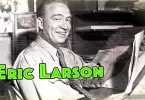Walt Disney and Mickey Mouse were genuine international sensations. However, about six years after creating Mickey, Walt was no longer creatively fulfilled by making formulaic short cartoons. Instead, he believed a full-length feature film cartoon would be both more profitable for his company and more fulfilling on a personal level. Thus, the Disney Brothers Studio began producing its first movie-length cartoon, Snow White and the Seven Dwarfs. It was based on the Grimm brothers’ fairy tale.
It took the Disney studio four years to complete production on Snow White, including the animation. During production, entertainment industry insiders snidely dubbed the project “Disney’s Folly,” because they thought making a movie-length cartoon was foolish and would bankrupt the studio. It was something that had not been done before, so no one really knew what to expect, and the detractors enjoyed taking their shots at Walt and his company.
The movie wasn’t cheap to produce, it was true. Walt was ambitious with his plans for Snow White, including making it in full sound and full color. The project itself cost $1.5 million — a drop in the bucket to produce a movie today, but a vast fortune in 1934. It was not only expensive, but the actual production price of $1.5 million was three times over the project’s initial budget. It was an ambitious project by anyone’s estimations. Despite the negativity being thrown his way, though, Walt stayed positive about it.
He was exacting in his production of this movie. Walt wanted the animation to look as realistic as possible, so he sent the movie’s animators to attend courses at the Chouinard Art Institute. He also brought live animals into the animation studio, to allow his animators the opportunity to observe how those animals moved and interacted in real life (and portray this in their animation).
Walt even wanted to copy the live action movie technique of changing the background perspective as a camera moved around in a scene; to do this, his studio invented a special multiplane camera that let them put drawings on glass at various distances away from the camera, which created an illusion of depth. This was something no cartoon had ever done before. In fact, the camera was even more sophisticated than that. The glass drawings could by moved around to create the illusion of a camera moving through a movie scene.
The camera was used for the first time on one of Walt’s Silly Symphony cartoons called The Old Mill in 1937. Snow White was in production at the time, and Walt needed a project on which to test the camera. The work was so visually stunning that Walt won the Academy Award that year for Animated Short Film. Happy with the results from the camera, Walt ordered some bits of Snow White that had already been filmed to be re-filmed to incorporate the new camera and its impressive effects-creating abilities.
An animated visualization of original music by Leigh Harline. The animal population of an old mill passes through a stormy night
Snow White premiered in movie theaters in December of 1937. It received enormous praise from both critics and audiences. In fact, Snow White and the Seven Dwarfs went on to become the most successful movie in 1938. By May of 1939, it had grossed $6.5 million; this made it the most successful movie to ever be made, to that date. Disney’s Folly had become Disney’s Triumph.
To commemorate the success of Snow White, Walt was awarded another Honorary Academy Award, which included one full-sized statue award, and seven miniature ones, to mimic the seven dwarfs. With the success of Snow White, one of the most productive eras for the Disney Brothers studio began. In fact, the Walt Disney Family Museum refers to the years following Snow White as “the golden age of animation.”
On the heels of the success of Snow White, Walt began production on his next full-length cartoon movie, Pinocchio. He began production on Fantasia, another full-length cartoon movie, later that same year. Both movies were released in 1940, though neither did well at the box office. It wasn’t because of the quality of the movies or a drop-off in the public’s desire for cartoon movies, though. It was because WWII had started in Europe, meaning revenues from the European release of both movies were below what was expected. Because the movies did not meet financial projections, the Disney studio made a loss on both of them and went deep into debt in 1941.
Michael Eisner Intros, Fantasia Creation Of A Disney Classic (1990-09-30)
To deal with the financial situation at the company, Walt and Roy Disney released the studio’s first public stock and made heavy cuts in salaries for their employees. The cut in salary, along with Walt’s well-known haughty and insensitive way of interacting with employees, lead to an animator’s strike at the studio in 1941. The strike lasted five weeks and required a mediator from the National Labor Relations Board to step in and negotiate between both sides of the dispute. Walt made a goodwill trip to South America on behalf of the Office of the Coordinator of Inter-American Affairs during the negotiations to be sure he would not be present when a resolution was made, as he knew it would not be favorable to the studio.
The strike resulted in several animators leaving the company. Walt’s relationship with those who stayed was permanently strained. Yet, Walt and Roy Disney’s company pulled through it and was able to begin producing cartoons again. The studio resumed work on its current project, Dumbo, which had been temporarily halted during the strike. Dumbo was released in 1941, having been produced far more simply and effectively than the previous three animated films had been. The movie was well-received by both critics and the audience, and did quite well at the box office, at least domestically, especially considering its projected revenues were much more modest than Pinocchio and Fantasia, due to the war. The Disney Brothers studio was back on top in the animation business once again, and this time, it never really left that position. Disney animation became the most known and beloved in the world.






